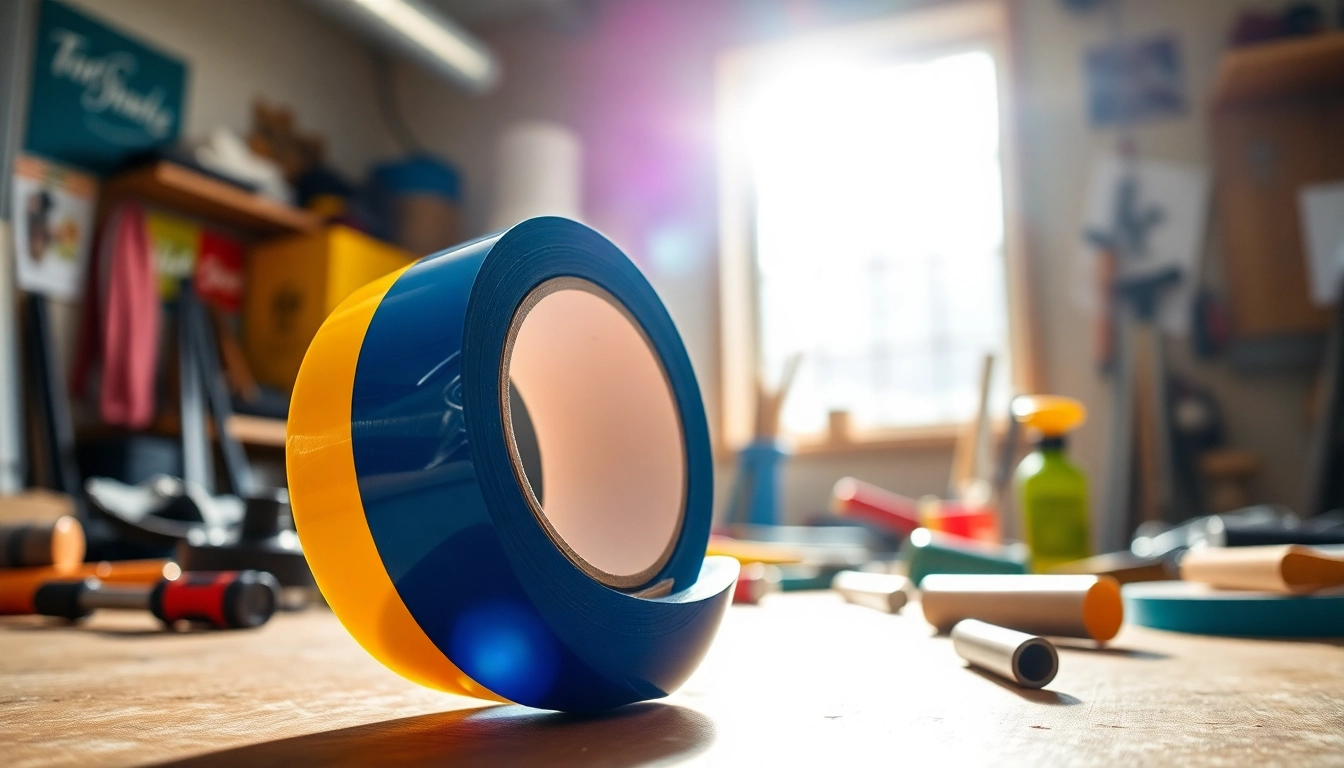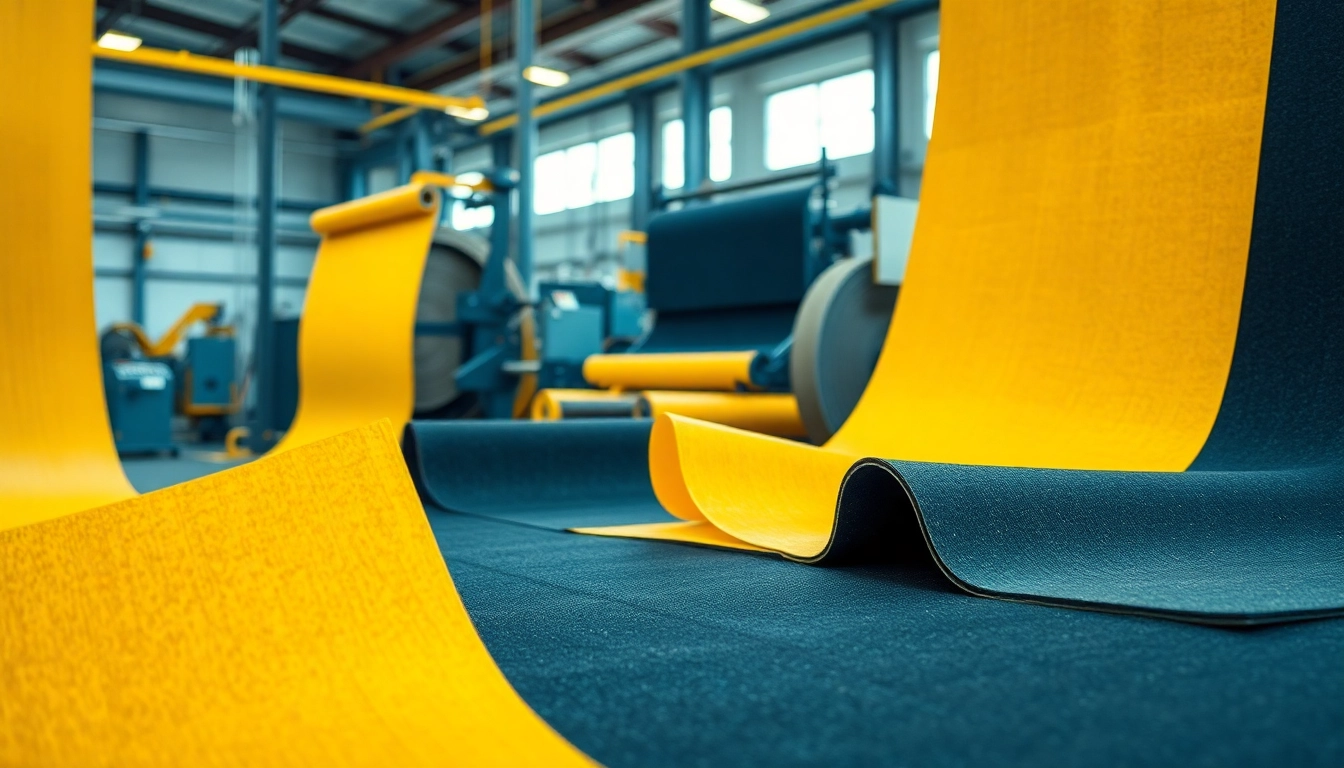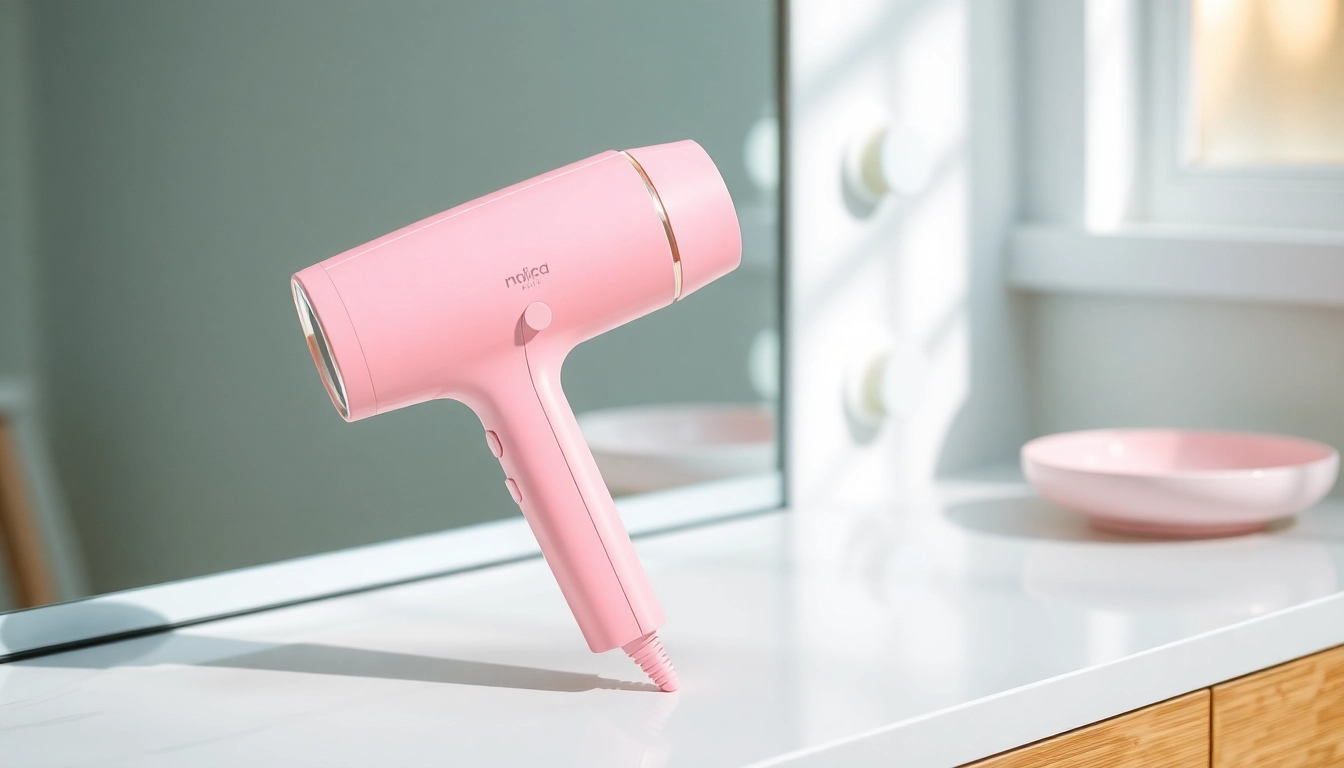Understanding Vinyl Tape: Composition and Characteristics
What is Vinyl Tape?
Vinyl tape is a popular adhesive product notable for its versatility and durability. Made primarily from polyvinyl chloride (PVC), this tape is designed for a wide range of applications across various industries. Whether used for marking floors, electrical insulation, or decorative purposes, vinyl tape is a staple in both professional and DIY settings. Its ability to provide strong adhesion while being easy to unwind and cut makes it a favored choice among project managers and builders alike. For those interested in purchasing quality vinyl tape, understanding its unique properties can help in selecting the right product for specific needs.
Materials Used in Vinyl Tape Production
The production of vinyl tape primarily involves the use of PVC, which is known for its excellent waterproofing properties and resistance to chemicals and UV light. The tape generally consists of a thick vinyl base that is coated with a rubber-based pressure-sensitive adhesive. This combination ensures that the tape adheres well to various surfaces while remaining flexible and resistant to tearing. Additionally, colorants can be added during manufacturing to create a range of vibrant colors, making vinyl tape suitable for decorative and organizational purposes.
Durability and Performance Metrics
One of the standout features of vinyl tape is its robustness. It is designed to endure stress and strain without losing its adhesive qualities or structural integrity. Performance metrics are typically evaluated based on factors such as tensile strength, elongation, and shear adhesion. For instance, a high-quality vinyl tape can maintain its adhesion even in demanding environments like industrial settings, where exposure to moisture or varying temperatures might compromise other types of tape. As such, this makes it a reliable choice for long-term projects.
Common Applications of Vinyl Tape
Floor Marking and Color Coding
Vinyl tape is widely recognized for its use in floor marking and color coding. Many businesses and public spaces utilize this tape to delineate pathways, hazard zones, and specific areas. The bright colors and strong adhesive properties make it an ideal choice for safety applications. In schools, gyms, and warehouses, vinyl tape can easily create visual guides that improve organization and reduce accidents.
Electrical and Safety Uses
Another prevalent application for vinyl tape is in electrical work. Electricians often rely on vinyl tape for its insulating properties, using it to cover and protect electrical wires and connections. It serves as a non-conductive barrier against moisture, heat, and other potential hazards. Additionally, vinyl tape can be used for temporary fixes or as a supplementary measure to protect sensitive components during repairs.
Home Improvement Projects
Homeowners frequently incorporate vinyl tape into various DIY projects. From painting to crafting, the tape provides versatility and ease of use. For instance, when painting, individuals can use vinyl tape to create clean, straight lines for a professional finish. Similarly, in crafting, the tape can be utilized to create borders and outlines, adding visual interest to art projects. Its easy removability and surface friendliness eliminate the risks of damage to the underlying surfaces, making it a go-to solution for home improvement enthusiasts.
Choosing the Right Vinyl Tape for Your Project
Different Types and Sizes of Vinyl Tape
When selecting vinyl tape, it’s essential to consider the specific requirements of your project. Vinyl tape comes in various widths, from narrow strips for detailed work to wider options for covering larger surfaces. Additionally, the tape is available in multiple characteristics, such as standard adhesive or high-performance variants designed for extreme conditions. Depending on the intended use, choosing the right size and type can significantly impact the efficiency and effectiveness of the application.
Factors to Consider When Selecting Vinyl Tape
Several factors should be taken into account when selecting vinyl tape for your specific needs. These include:
- Adhesive Strength: Assess whether a standard adhesive will suffice or if a stronger variant is necessary.
- Color: The color may not only affect aesthetics but also how visible the tape is in its environment.
- Thickness: Thicker tapes tend to offer greater durability but may be less flexible.
- Temperature Resistance: If working in extreme environments, consider a vinyl tape that can withstand temperature fluctuations without losing integrity.
Comparing Vinyl Tape with Other Adhesive Tapes
While vinyl tape is an excellent choice, it is also essential to understand how it differs from other types of adhesive tapes, such as masking tape or duct tape. For instance, masking tape is designed primarily for paint applications and may not offer the same durability and moisture resistance as vinyl tape. Similarly, duct tape is stronger but often leaves a sticky residue when removed, making vinyl tape a more convenient choice for many applications. Evaluating these differences can assist in making informed decisions when selecting the most suitable tape for a project.
Installation and Best Practices for Vinyl Tape
Preparation: Cleaning and Surface Requirements
Before applying vinyl tape, it’s crucial to prepare the surface adequately. Begin by ensuring that the surface is clean, dry, and free from dust, oils, or other contaminants that could affect adhesion. For best results, clean the area with a suitable solvent or cleaner and allow it to dry completely. Additionally, check for any irregularities that might interfere with tape application, such as bumps or debris.
Step-by-Step Application Guide
The application of vinyl tape involves straightforward steps:
- Measure and Cut: Determine the length of tape needed and cut it cleanly using scissors or a tape cutter.
- Position: Position the tape on the desired area without pressing down firmly at first.
- Press and Adhere: Once the tape is correctly aligned, press it down firmly, ensuring that there are no air bubbles.
- Finish: Finally, trim any excess tape if necessary, and ensure the edges are firmly attached.
Maintenance and Removal Tips
Maintaining the integrity of applied vinyl tape is essential for optimal performance. Avoid exposing the tape to extreme conditions that it is not rated for, as this can lead to premature failure. When it’s time to remove the tape, peeling it back slowly at a 45-degree angle helps prevent residue from being left behind on the surface. If residue does remain, gentle scraping with a plastic tool can help clean the area without damaging the underlying surface.
Innovative Uses of Vinyl Tape in Various Industries
Creative Applications in Arts and Crafts
Vinyl tape has found a significant place in the world of arts and crafts. Crafters appreciate its versatility, using it to create unique designs, patterns, and borders in their projects. The variety of colors available allows artists to experiment freely and express their creativity. Whether used in scrapbooking, model making, or even painting, the possibilities are endless. Innovative approaches, such as layering different colors or creating stencils, can elevate art projects and bring imaginative ideas to life.
Utilization in Sports and Recreational Activities
In the realm of sports, vinyl tape serves multiple purposes, from marking boundaries on playing fields to providing athletes with grip on their equipment. For example, basketball courts and gymnasiums often employ vinyl tape for floor markings due to its visibility and durability, ensuring players are aware of the play areas. Additionally, athletes may use colored vinyl tape for customization of their gear or even for therapeutic taping methods, providing a level of support during training and competitions.
Professional Uses in Manufacturing and Construction
Within the manufacturing and construction sectors, the uses for vinyl tape are diverse. It acts as a labeling tool, securing materials, electrical insulation, and even in safety protocol, marking areas for hazards or equipment storage. The tape’s resistance to wear and chemicals makes it an ideal solution in manufacturing plants, where machinery and materials expose the tape to various elements. Furthermore, its flexibility allows for quick adjustments, making it a reliable choice for professionals looking to enhance productivity without sacrificing quality.



